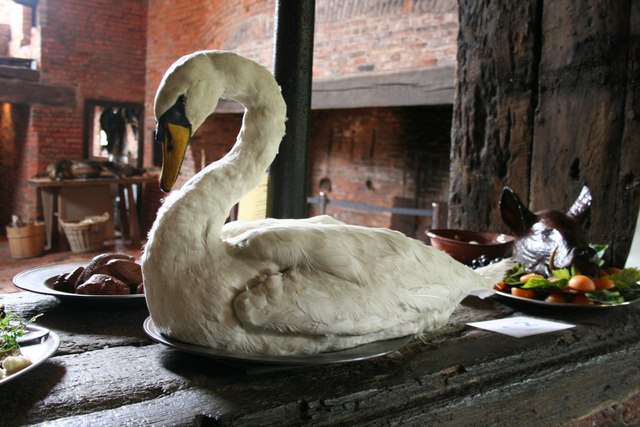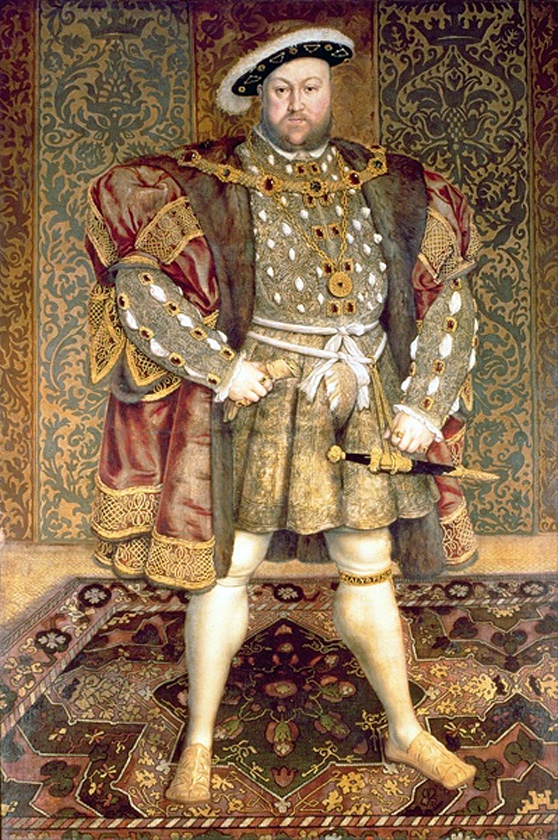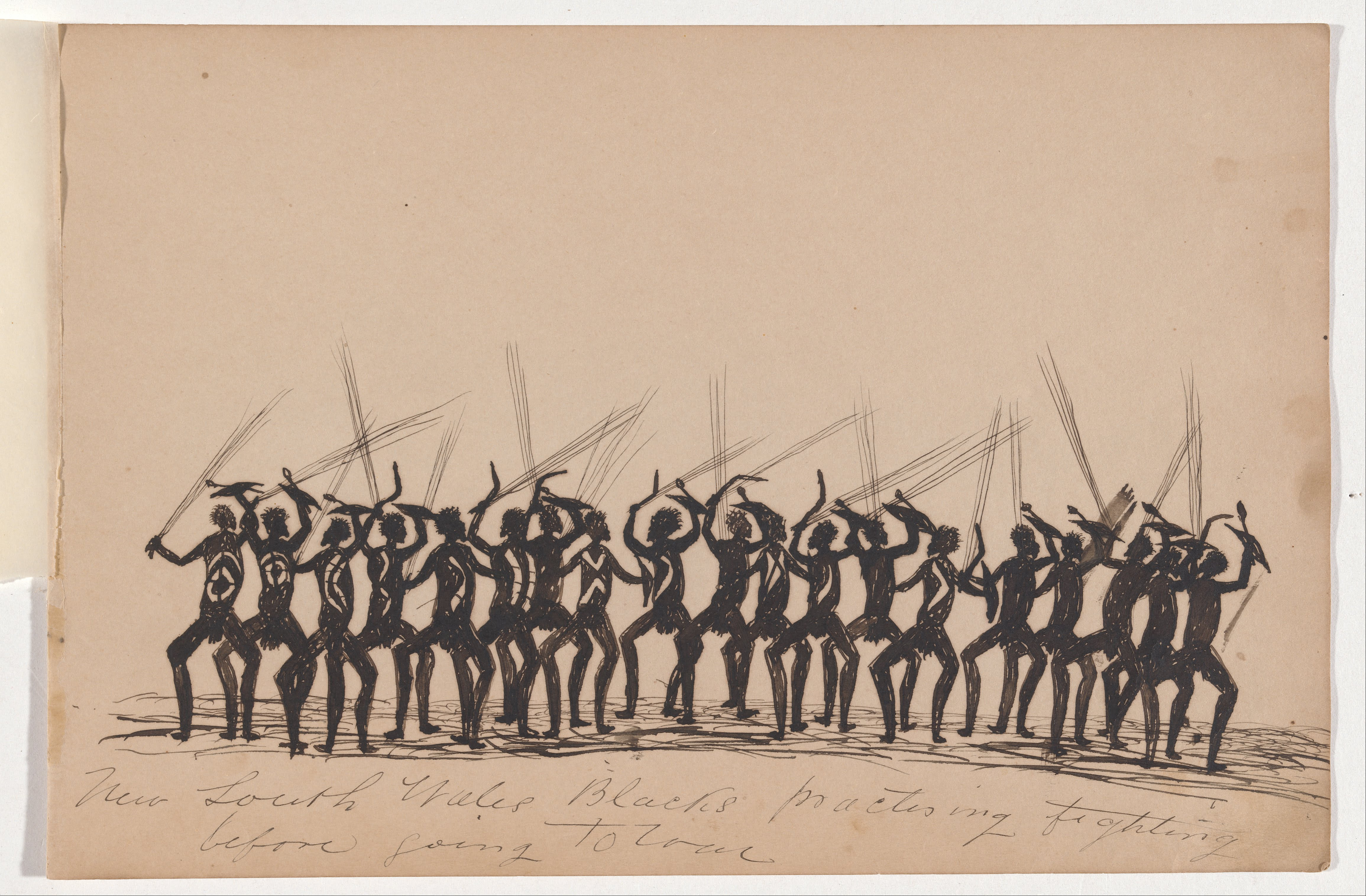King Henry VIII of England, was king from1509, until his death in 1547. When we think of
this despotic ruler today, we may remember his six wives, of which one died, one survived, two he divorced and two he had beheaded. Or, as the children's rhyme goes; “Divorced, Beheaded, Died: Divorced, Beheaded, Survived.”
We may also picture the ageing Henry and his prodigious appetite. Game pies were a favourite, as were dishes based on cooked larks, snipes, quail, crane, partridge and sparrow; as well as eels, salmon, porpoises and dolphin. Such fare, undoubtedly, added to Henry's ever-growing girth; he reached a waist measurement of 54 inches (140 cm), as he was wheeled about in wheelchair like contraptions.

There is no doubt that Henry is remembered often, as a sort of monster; especially, after he suffered jousting injuries, the first of which occurred in 1524. It is speculated that the various accidents that Henry sustained, like the one that left him "speechless" for two hours, may have caused brain injuries which made Henry act erratically and affected his whole personality. As historian Lucy Worsley has said about his first jousting injury: "From that date, the turnover of the wives really speeds up, and people begin to talk about him in quite a new and negative way."
Henry, essentially, goes from being a charming, handsome and intelligent man, to an obese, cruel and paranoid tyrant. An ambassador at the Tudor court reported that in his youthful days: "His Majesty is the most handsomest potentate I have ever set eyes on. Above the usual height with an extremely fine calf to his leg and a round face so very beautiful it would become a pretty woman." However, Pope Paul III, in 1538, described Henry as a “most cruel and abominable tyrant.”
 |
| Portrait of Henry VIII of England |
|
It was when Henry was in his mid-forties that his health began to deteriorate and his good looks began to fade away. A leg injury he suffered whist jousting became ulcerous and the resulting incapacity probably led to other health problems like Type II diabetes and hypertension. He was deteriorating fast and his health was probably further compromised by the bloodletting which occurred in accordance with the waxing and waning of the moon. And the smell from his infected ulcers could be noticed three rooms away.
The Marquis of Exeter and Lord Montagu were beheaded for treason after discussing Henry's health. Saying of the King: "he has a sorre legge that no pore man would be glad off, and that he should not lyve long for all his auctoryte next God" and "he will die suddenly, his legge will kill him, and then we shall have jolly stirring."
When Henry did die, morbidly obese, in 1547, aged 55 and 7 months, probably from renal and liver failure, his body was prepared for burial by "spurging, cleansing, bowelling, searing, embalming, furnishing and dressing with spices." And then, the coffin, draped in cloth of gold with an effigy of the king, dressed with crown and crimson velvet shoes, was accompanied by a thousand men on horseback and hundreds more on foot, to Whitehall, where his body lay for a few days, then stopping overnight at Syon House, on the way to Windsor.
Henry's black marble sarcophagus, which he had callously confiscated from Cardinal Wolsey, contained his 300-pound corpse. And, according to Gilbert Burnet, Scottish theologian and bishop of Salisbury, the coffin leaked during the night, with “putrid matter” from the body, onto the floor and in the morning, a stray dog was seen licking the bodily fluids.
 |
| Coffins of King Henry VIII (centre), Queen Jane Seymour (right) by Alfred Young Nutt, Surveyor to the Dean and Canons of St George's Chapel, Windsor Castle. Nutt recorded that Henry's coffin was about two metres in length and was in a state of disrepair with some bodily remains visible. |
But the origin of this story is a Friar Peto, a Franciscan of Greenwich, who made the prophecy about King Henry following Henry's scandalous divorce, warning Henry that there may be consequences in the future for his actions, such as having dogs lick his blood, as they had Ahab's, after death.
So, afterwards, some people may have told the coffin-leaking/dog licking story, which would neatly fulfil Peto's prophecy. The only problem being that, it probably didn't happen.
 Paypal co-founder and Facebook billionaire Peter Thiel has had a $4.7 million home built in Queenstown, New Zealand, complete with a panic room. But others are having underground bunkers sent over from the US.
Paypal co-founder and Facebook billionaire Peter Thiel has had a $4.7 million home built in Queenstown, New Zealand, complete with a panic room. But others are having underground bunkers sent over from the US. Elon Musk the co-founder and CEO at Tesla, is planning to personally ride to Mars on one of his SpaceX rockets, taking other people with him to start building a colony there. Perhaps this planned flight to Mars is related to Musk's concerns about artificial intelligence, which he has said is more dangerous than nuclear weapons. He has also spoken about how a Mars colony would be a much better option for saving humanity in the event of an apocalyptic disaster.
Elon Musk the co-founder and CEO at Tesla, is planning to personally ride to Mars on one of his SpaceX rockets, taking other people with him to start building a colony there. Perhaps this planned flight to Mars is related to Musk's concerns about artificial intelligence, which he has said is more dangerous than nuclear weapons. He has also spoken about how a Mars colony would be a much better option for saving humanity in the event of an apocalyptic disaster.


















